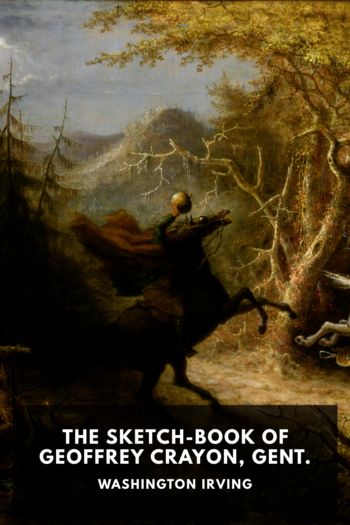Loverly:The Life and Times of My Fair Lady (Broadway Legacies) by McHugh, Dominic (e reader comics TXT) 📕

Read free book «Loverly:The Life and Times of My Fair Lady (Broadway Legacies) by McHugh, Dominic (e reader comics TXT) 📕» - read online or download for free at americanlibrarybooks.com
Read book online «Loverly:The Life and Times of My Fair Lady (Broadway Legacies) by McHugh, Dominic (e reader comics TXT) 📕». Author - McHugh, Dominic
At this point, Lerner and Loewe reunited on the Pygmalion project, and no further work seems to have been carried out on Saints and Sinners until 1956. It was not completely abandoned, though. The New York Times reported on January 8, 1955, that Fields and Chodorov had “not forgotten Dancin’ Day” but that Rome and Loewe must complete the score first. Rome’s papers indicate that the project was revived in September 1956, six months after the opening of My Fair Lady, when the four collaborators had to pay up or relinquish the rights to Carroll’s play. In October it was decided that the musical would be made into a film, rather than a stage show, something that was later mentioned in the New York Times; and by March 1957 a deal had been reached with Romay Pictures Inc., which would make the film.53 Nothing more seems to have come of it, however—perhaps because of the gradual demise of the movie musical in the 1950s, or perhaps because Loewe was busy on his new musical with Lerner, Gigi—and there is no further mention of it in the Rome papers. An undated typescript for the show has survived, though; some of Loewe’s manuscripts for the songs were sold at an auction at Christie’s in Los Angeles in 1999; and the Library of Congress possesses a thirty-minute composer’s “demo” recording of ten numbers from the show.54 Therefore, more time was evidently spent on this project than has been previously acknowledged, and it would even be theoretically possible to piece the material together to produce some kind of liberal realization of the work. Both script and composer’s demo indicate that the score inclines toward the earlier style of the Loewe of Brigadoon, however, and one can see why the composer of My Fair Lady and Gigi decided to let it go.
Meanwhile, Lerner—ever the insatiable workaholic—had begun work on new projects with Arthur Schwartz. On March 17, 1953, the New York Times reported that the pair had “reached an agreement with Al Capp to make a musical of his popular cartoon, Li’l Abner, for presentation on Broadway next season. … Mr. Schwartz will compose the music and Mr. Lerner will work out the book and lyrics. Together, they will serve as producers of the venture.”55 The article went on to relate how the idea of making a musical out of Capp’s cartoons had previously been explored by Joshua Logan, the director of South Pacific, and that this would mark the first collaboration between Lerner and Schwartz, who had been a prolific writer of songs for Broadway for more than twenty years.56 The article also reported that Lerner was writing another play for Schwartz, and that the pair was working on a film adaptation of Lerner and Loewe’s 1951 stage show Paint Your Wagon—clear confirmation of a rift between the original collaborators, with three projects outlined for the new Lerner-Schwartz combination. Their Wagon film had been mentioned in the New York Times as early as February 1953, when it was slated to be “the first feature-length entertainment film to be made in the Cinerama process,” though ultimately the musical did not make it to the screen until 1969 when extra songs were added by Lerner and André Previn.57
Ian Richardson as Higgins in the 1976 Broadway revival of My Fair Lady (Photofest)
The Los Angeles Times had also reported on the movie on February 11, stating that it was “all but set for Paint Your Wagon to go before the cameras June 8 as the first Cinerama production here, and a big musical it will be.” In addition to the Lerner and Loewe numbers from Broadway, the article continued, “Lerner and Arthur Schwartz are to write eight new songs.”58 Seven of these songs have survived in piano-vocal manuscript and are in the Arthur Schwartz Collection at the Library of Congress. Two of them lack lyrics, but collectively these numbers represent a substantial amount of work. “Bonanza!” is a lively jig in 6/8 time, and like all these songs, it shows Schwartz’s lightness of touch in combining the thirty-two-bar song form with the atmosphere of the Wild West. “Californey Never Looked So Good” is a similarly upbeat and optimistic number, and though the lyrics for “Kentucky” have not survived, the use of common time, the tempo indication of Allegretto, and the persistently underlined D-major tonality suggest a positive depiction of the state. No words remain for “Paint Your Wagon,” either, but it is marked “Slowly” and features the conventional dotted-rhythm accompaniment of western music, apparently used (as far as one can tell) to poignant effect. Although “Noah was a Wisdom Man” maintains the western tinta of the rest of the numbers, it also serves as a reminder of the Dietz-Schwartz songs of the 1930s revues, both in its fast harmonic rhythm and witty lyrics (“For after days afloat, it has been wrote, / Nobody





Comments (0)